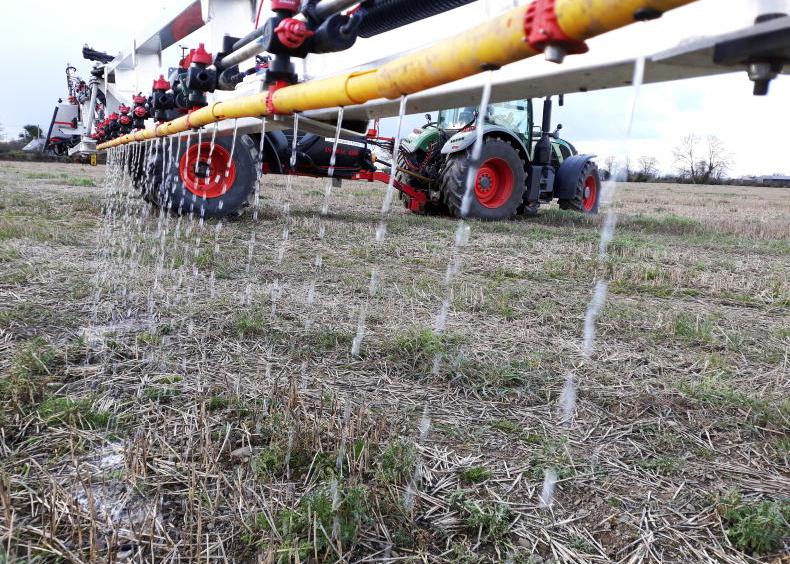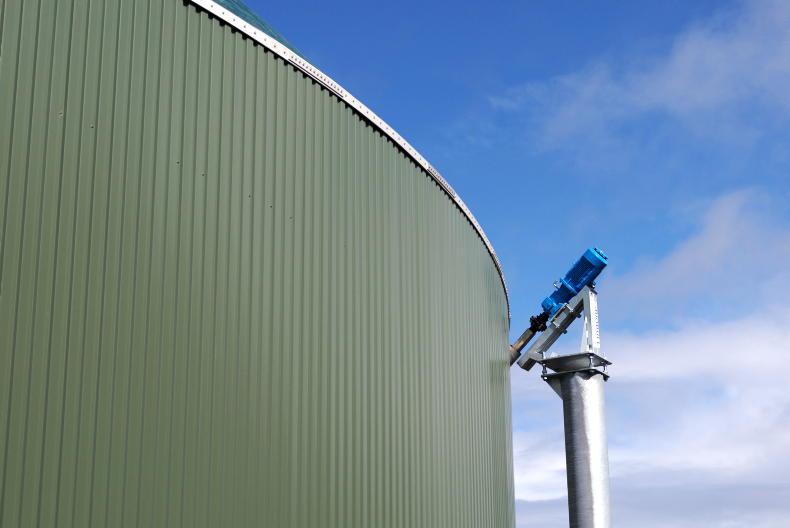The [reduced forest rotation] policy appears contrary to the long-term best interests of the established sawmill industry…
– The Irish Timber Industry:
An Export Development Plan for the 1990s (Simons Report, 1991).
The above quote, from the Simons Report, refers to the policy of reduced forest rotations, which was introduced in the mid-1970s by the then Forest and Wildlife Service to “make more timber available sooner”. Simons had major reservations about the policy as it resulted in a reduction of average tree size and large sawlog yield as well as a reduction of volume per hectare yield at harvest.
The policy remains in place. Sawmills adapted to the policy as most investment in sawing technology has been geared to cater for average log sizes less than 1m3.
Since Simons was published, sawmilling has been rationalised and three international-scale wood based panel (WBP) mills have been established in Ireland resulting in a more viable timber processing sector so the policy of reduced rotation seems justified. But is it?
It is forgotten now that the policy was a State initiative which was introduced when private forests produced less than 10% of logs. By 2035, private timber supply is forecast to increase to 62% of all production.
The advantages and disadvantages of extending rotation lengths were discussed at a recent field day in a 27-year-old Sitka spruce forest in the townland of Aghadreen, Timahoe in Co Laois. Based on normal MMAI rotation for YC24, the crop is due for clearfell at age 46. However, felling next year at age 28, wouldn’t be unusual even though it represents a 40% reduced rotation.
In a paper presented to the group, forestry consultant Fionán Russell questioned this and considered a 39-year rotation. He presented a scenario that would allow three further thinnings at years 27, 31 and 34, yielding an average of 70m3/ha per thinning. The final thinning would be followed by clearfell at 39 years when the crop would yield 534m3/ha.
Benefits
The economic, production and environmental benefits of allowing the crop to grow on for a further 12 years are compelling but Russell acknowledged two counter arguments.
When the crop reaches age 39, it will have an estimated top height of 27m, which in Ireland is 2m taller than the critical tree height in areas of lowest windthrow hazard class, so there would be some risk of wind damage, especially if the crop is allowed to grow to full rotation.
Another issue that could cause marketing problems is the average large tree size as the crop matures. For example, Russell estimated that at year 39, the average tree size would be 1.7m3, which is almost double the size that sawmills prefer.
One way to address this challenge is to carry out three crown thinnings before clearfell, he maintained. Crown thinning involves the removal of larger trees at thinning stage, compared with a conventional low thinning where the smaller trees are removed.
The corresponding data from conventional thinning would require the removal of 210 trees/ha
This approach would remove the larger trees – 0.73m3 and greater – during later thinning. It might mean marking the trees to removed rather than leaving it solely to the judgment of the harvesting operator. It could be cost effective as fewer trees need to be removed – 92/ha averaging 0.76m3 – which would produce an average volume of 70m3/ha.
“The corresponding data from conventional thinning would require the removal of 210 trees/ha,” said Russell.
“Essentially, crown thinning allows the bigger trees to be harvested before they are too large for the current market.”
He acknowledged “that crown thinning is rarely carried out in Ireland and there are no readily available models to simulate this management approach”.
As a result, there is a lack of expertise among foresters and contractors to carry out crown thinning effectively .
The group also visited the Coillte Glendine forest property, north of Camross. This crop is still standing after 101 years so as Pacelli Breathnach pointed out, maybe we have underestimated the ability of Sitka spruce to withstand wind damage.
However, he also acknowledged that with an average volume of 15m3 per tree, it is unlikely that Irish sawmills would be able to process Glendine Sitka today so it will continue as a Coillte long-term retention forest.
Implications of reduced rotations
There is no clear definition of a forest rotation. Unlike annual agricultural crops which have a defined growing and harvesting season, a forest rotation can be as long or as short as the forest owner’s objectives.
Rotation length is influenced by a range of factors including tree species, site stability, crop quality, market prices and now climate change but above all by yield. If the objective is economic, rotation end – age of final felling – occurs when the crop generates the maximum timber yield which is usually – but not always – the age it produces maximum revenue.
Forecasting rotation length is determined by the potential age of maximum mean annual increment (MMAI) per hectare of volume which indicates the crop’s yield class (YC). Thus, YC24 Sitka spruce refers to an MMAI of 24m3 per hectare of volume (m3/ha/annum) at 46 years which would have been the age of clearfell before reduced rotation was introduced.
Rotations vary with species even with the same YC. For example, YC24 Douglas fir has a MMAI at year 50, western hemlock, year 53, Norway spruce year 61 and so on.
The lower the YC the longer the rotation. For example, slower-growing species such as Scots pine at YC10 reach maximum yield at age 73 while broadleaves such as YC6 oak and beech would require rotations of between 80 and 96 years before reaching the age of MMAI.
Since the policy of reduced rotations was introduced, few forests are allowed to grow on to the age of MMAI in Ireland.
Early clearfelling also reduces the carbon sequestration benefits that longer-term rotations provide
This policy recommends reducing rotation by 20% for Sitka and 30% for Norway and lodgepole pine but, in reality, it has resulted in reduced rotations of 30% to 40%, especially for Sitka.
For example, it wouldn’t be unusual to clearfell YC24 Sitka spruce at year 28 which represents a 40% reduced rotation, as discussed during the recent field day organised by the Association of Irish Forestry Consultants.
At that age, the forest is producing its highest annual yield of 34m3/ha but its most productive period is for the next 12 years until age 40 when it averages 32m3ha per annum or a cumulative volume 380m3. This is a greater yield than the first 23 years of the forest’s rotation but generates much greater revenue potential as the crop produces mainly large sawlog.
The forest owner who clearfells at age 28 misses out on this income phase which could generate an extra €24,000/ha in thinnings plus additional clearfell revenue.
Early clearfelling also reduces the carbon sequestration benefits that longer-term rotations provide plus up to a further 80 years carbon storage in buildings that more mature forests provide in large sawlog. While it is advisable to clearfell early in sites that are vulnerable to windthrow, there are clear silvicultural, economic, production and environmental benefits in extending rotations on good-quality wind-firm sites.
The [reduced forest rotation] policy appears contrary to the long-term best interests of the established sawmill industry…
– The Irish Timber Industry:
An Export Development Plan for the 1990s (Simons Report, 1991).
The above quote, from the Simons Report, refers to the policy of reduced forest rotations, which was introduced in the mid-1970s by the then Forest and Wildlife Service to “make more timber available sooner”. Simons had major reservations about the policy as it resulted in a reduction of average tree size and large sawlog yield as well as a reduction of volume per hectare yield at harvest.
The policy remains in place. Sawmills adapted to the policy as most investment in sawing technology has been geared to cater for average log sizes less than 1m3.
Since Simons was published, sawmilling has been rationalised and three international-scale wood based panel (WBP) mills have been established in Ireland resulting in a more viable timber processing sector so the policy of reduced rotation seems justified. But is it?
It is forgotten now that the policy was a State initiative which was introduced when private forests produced less than 10% of logs. By 2035, private timber supply is forecast to increase to 62% of all production.
The advantages and disadvantages of extending rotation lengths were discussed at a recent field day in a 27-year-old Sitka spruce forest in the townland of Aghadreen, Timahoe in Co Laois. Based on normal MMAI rotation for YC24, the crop is due for clearfell at age 46. However, felling next year at age 28, wouldn’t be unusual even though it represents a 40% reduced rotation.
In a paper presented to the group, forestry consultant Fionán Russell questioned this and considered a 39-year rotation. He presented a scenario that would allow three further thinnings at years 27, 31 and 34, yielding an average of 70m3/ha per thinning. The final thinning would be followed by clearfell at 39 years when the crop would yield 534m3/ha.
Benefits
The economic, production and environmental benefits of allowing the crop to grow on for a further 12 years are compelling but Russell acknowledged two counter arguments.
When the crop reaches age 39, it will have an estimated top height of 27m, which in Ireland is 2m taller than the critical tree height in areas of lowest windthrow hazard class, so there would be some risk of wind damage, especially if the crop is allowed to grow to full rotation.
Another issue that could cause marketing problems is the average large tree size as the crop matures. For example, Russell estimated that at year 39, the average tree size would be 1.7m3, which is almost double the size that sawmills prefer.
One way to address this challenge is to carry out three crown thinnings before clearfell, he maintained. Crown thinning involves the removal of larger trees at thinning stage, compared with a conventional low thinning where the smaller trees are removed.
The corresponding data from conventional thinning would require the removal of 210 trees/ha
This approach would remove the larger trees – 0.73m3 and greater – during later thinning. It might mean marking the trees to removed rather than leaving it solely to the judgment of the harvesting operator. It could be cost effective as fewer trees need to be removed – 92/ha averaging 0.76m3 – which would produce an average volume of 70m3/ha.
“The corresponding data from conventional thinning would require the removal of 210 trees/ha,” said Russell.
“Essentially, crown thinning allows the bigger trees to be harvested before they are too large for the current market.”
He acknowledged “that crown thinning is rarely carried out in Ireland and there are no readily available models to simulate this management approach”.
As a result, there is a lack of expertise among foresters and contractors to carry out crown thinning effectively .
The group also visited the Coillte Glendine forest property, north of Camross. This crop is still standing after 101 years so as Pacelli Breathnach pointed out, maybe we have underestimated the ability of Sitka spruce to withstand wind damage.
However, he also acknowledged that with an average volume of 15m3 per tree, it is unlikely that Irish sawmills would be able to process Glendine Sitka today so it will continue as a Coillte long-term retention forest.
Implications of reduced rotations
There is no clear definition of a forest rotation. Unlike annual agricultural crops which have a defined growing and harvesting season, a forest rotation can be as long or as short as the forest owner’s objectives.
Rotation length is influenced by a range of factors including tree species, site stability, crop quality, market prices and now climate change but above all by yield. If the objective is economic, rotation end – age of final felling – occurs when the crop generates the maximum timber yield which is usually – but not always – the age it produces maximum revenue.
Forecasting rotation length is determined by the potential age of maximum mean annual increment (MMAI) per hectare of volume which indicates the crop’s yield class (YC). Thus, YC24 Sitka spruce refers to an MMAI of 24m3 per hectare of volume (m3/ha/annum) at 46 years which would have been the age of clearfell before reduced rotation was introduced.
Rotations vary with species even with the same YC. For example, YC24 Douglas fir has a MMAI at year 50, western hemlock, year 53, Norway spruce year 61 and so on.
The lower the YC the longer the rotation. For example, slower-growing species such as Scots pine at YC10 reach maximum yield at age 73 while broadleaves such as YC6 oak and beech would require rotations of between 80 and 96 years before reaching the age of MMAI.
Since the policy of reduced rotations was introduced, few forests are allowed to grow on to the age of MMAI in Ireland.
Early clearfelling also reduces the carbon sequestration benefits that longer-term rotations provide
This policy recommends reducing rotation by 20% for Sitka and 30% for Norway and lodgepole pine but, in reality, it has resulted in reduced rotations of 30% to 40%, especially for Sitka.
For example, it wouldn’t be unusual to clearfell YC24 Sitka spruce at year 28 which represents a 40% reduced rotation, as discussed during the recent field day organised by the Association of Irish Forestry Consultants.
At that age, the forest is producing its highest annual yield of 34m3/ha but its most productive period is for the next 12 years until age 40 when it averages 32m3ha per annum or a cumulative volume 380m3. This is a greater yield than the first 23 years of the forest’s rotation but generates much greater revenue potential as the crop produces mainly large sawlog.
The forest owner who clearfells at age 28 misses out on this income phase which could generate an extra €24,000/ha in thinnings plus additional clearfell revenue.
Early clearfelling also reduces the carbon sequestration benefits that longer-term rotations provide plus up to a further 80 years carbon storage in buildings that more mature forests provide in large sawlog. While it is advisable to clearfell early in sites that are vulnerable to windthrow, there are clear silvicultural, economic, production and environmental benefits in extending rotations on good-quality wind-firm sites.









SHARING OPTIONS